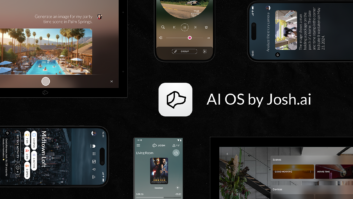Just five weeks after CEDIA Expo, a portion of the industry headed back to Colorado for the HTSA Fall Conference. There, dealer members and vendor partners were treated to three days of educational sessions, one-on-one meetings, and networking events. The overall theme of the event was “fusion” — the need for dealers to work with other dealers, vendor partners, architects, interior designers, and lighting designers — but the programming ran the gamut of hot topics that affect the industry, including recruitment, sales techniques, dealing with home power issues, and improving lighting skills.

Before attendees could look toward the future, however, they needed to take stock of where they are now — a topic covered by HTSA executive director Jon Robbins’s bi-annual “State of the Industry” report, which picked up right where his last one left off with a slide that was first presented at the HTSA Spring Conference in March.
“As a group, we finished 2023 — from a vendor purchase standpoint — off 1.4%,” said Robbins. “When we got the numbers for January and February 2024, we felt like we were continuing where we left off in 2023 — that we were going to experience a pretty flat year. But talking about where we are through August 2024, we are up over 5%, which we’re pretty happy with. We’re trending ahead of the channel. If September was what we think it was, we’re going to come in somewhere closer to 7 or 8% up. After September, if the trends stay, we have a legit shot of finishing up in double digits, which is a far cry from what we expected back in March.”
Further examination of the numbers revealed an interesting trend — members who had the group’s largest piece of lighting fixture purchases, categorized as Level 5 dealers, were up in overall purchases by a very healthy amount.
“We found that the members that are selling the most lighting fixtures, Level 5, are up 33.9% overall,” said Robbins. “Here’s what’s interesting about that — one could say, ‘It’s only up because they’re doing lighting,’ but our lighting business makes up 6% of our overall purchases.”
That lighting lift continues across the other levels, with Level 4 at a 23.1% rise overall, Level 3 at 3.4%, and Level 2 at 4.6%. Level 1, who sell a minimal amount of lighting, saw a drop of –6.5%.
Robbins spelled it out for attendees: “Members excelling in fixture sales are driving growth across all categories. Those who have found success in selling lighting fixtures are seeing increased overall purchases with all non-lighting vendor partners. The lighting category adoption is benefiting everybody and our message to the non-lighting vendor partners is that adoption of the lighting category is not negatively impacting business with non-lighting vendors.”
Part of the overall sales increase stems from dealers getting on projects earlier due to their work with lighting fixtures.
“When we first started talking about HTSA getting into lighting seven years ago, the idea was not to just create more dollars using a new category,” said Robbins. “It was to get our channel in the conversation earlier with builders, designers, and architects. This is working folks. The numbers are playing it out.”
That statement parlayed perfectly into the theme of the event, which was “fusion” — the combined power of a group working together that results in greater success than working alone.

“HTSA’s most significant wins happen when we collaborate,” said Robbins “The collaboration between members and vendors leads to overcoming challenges and achieving shared success. A key component of HTSA’s success is the focus on interpersonal relationships, so six years ago we brought in Keith Esterly and he has changed the lives of members who are now better able to connect with people. Fusion is not just about products and services, it’s also about people.
Related: State of the Industry at CEDIA Expo 2024 – Experts Agree on Favorable Outlook
“Strong interpersonal relationships are the foundation for long-term success initiatives. We had problems during the pandemic with the supply chain, which, thankfully, is in the rearview now, but our fusion as a collective not only helped us survive but thrive in uncertain times. By pulling knowledge, skills, and resources, we ensured that the whole was greater than the sum of its parts. If we continue to fuse our efforts and continue to work together, our collaboration will drive innovation, growth, and market leadership. This conference is a symbol of living fusion.”
AI on Our Minds
The keynote speaker for the event was Susan Frew, who provided real-world insight as to how to use AI to make a significant positive change in your business. While AI is a popular buzzword and comes with many admonitions to adapt it to your business, how to apply it effectively is discussed less frequently. Frew gave many examples, naming the AI tools used, as to how she saved her $2.5 million, Denver-based plumbing and HVAC company $170,000 in its 2024 budget.

While having a deep interest in AI, and already speaking about it and using it daily, a personal crisis required her to activate AI business tools in as many areas as she could to keep the company going. Even without that added pressure, she warned that it is important that integrators remain on the cutting edge of technology — both residential and business.
“I know you have a huge focus on AI and you are already working in emerging technologies, always bringing cutting-edge gear to all your customers,” said Frew. “If we do not become emergent, then we are going to become obsolete. And to compete on awesome, not on price, has a lot to do with AI because, in this upcoming market, we are going to have to be as lean as possible so that we can compete with larger competitors — as well as competitors who are going in the other, stagnant direction.
“We do not want to be those companies — we want to be the ones that are going to be emergent and leaders in our industry and get away from the price objection. Because if you can deliver it better, faster, and in a better way to your client, you are going to be the ones that win.”
Here are some of the areas in her business where Frew was able to make an impact with AI, the tools she used to do it, and her comments on each.
Accounting: “Who loves the budget? Nobody. I used to take an entire week and I would create the budget for our company. We created a GPT where I put all the key performance indicators showing what should be my profit margin, how much we should be spending on healthcare, what we should be spending on materials…all of these things. Then I took last year’s profit and loss and put it into a spreadsheet along with last year’s balance sheet — just the numbers, no personal information, no account numbers, nothing about our company. I asked the GPT to do two things: to create the budget for 2025 and, after I put in first-quarter numbers, to create a forecast for the rest of the year.
“Also, we were paying more than $2000 a month for accounting, so we moved over to an accounting AI named Booke.ai, which does a bank reconciliation every day so you do not need to wait until the end of the month to get your numbers. We still hire someone to do the monthly reconciliation just to make sure that everything’s working smoothly — it is always good to have another set of eyes on your books.”
Onboarding: “We took all our processes, systems — anything that you can think of to run our company — and we automated it with AI using a program called Trainn. Have you ever tried to write systems and policies and procedures for your company and you stare at the screen about the uniform policy? You know the HR policies, they are all in the handbook, but what Trainn creates is different. This is videos, this is learning, it is tests, it is quizzes, it is ‘sign off on this.’ I created it in five days.”
Payroll: “Payroll was taking my office manager over a whole day to do. I got it down now to 17 minutes using the AI tools.”
Call Center: “Another thing that we did that saved $2500 a month was to use Zyra Talk as our AI answering service. We trained it on our database — 27,000 recorded customer calls. We were paying $2700 a month for an answering service that we were able to save. In addition, we were able to not fill the position of a part-time dispatcher because this worked.”
Marketing/Content: “Not all of my science experiments work right out of the gate. I thought that it would be a great idea to save $3500 a month on search engine optimization because I had all these AI tools. It’s a lot harder than you think it is and I crashed our website three times. But I have now been able to get the website where I’m only spending about $500 a month instead of $4000 a month. And then that frees me up to do other types of marketing, including ebooks using Draft2Digital.” Frew also uses ChatGPT and Canva for her social media needs for $500/month.
Finding and keeping track of all the new developments in AI tools can be difficult, and Frew recommends using There’s An AI For That.
Collaboration and AI have the potential to drive the CI industry toward a thriving future. Robbins concluded his presentation with the promise that these tools can bring to HTSA and the entire industry. “This conference marks a moment in time where we are not just talking about fusion, we are living it together,” he said. “We will continue to shape the future of our industry, not just respond to it.”







